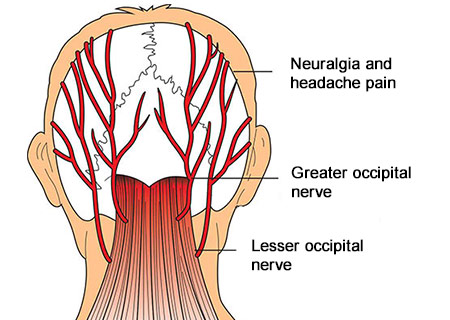Neural tissues are susceptible to compression in nature.
When the head and neck stay in the extended position for a prolonged period of time, the head is no longer stable structurally. The weight of the head shifts backward, there’s less benefit of doing it at the risk of an injury.
The Greater Occipital Nerve (C2) is a spinal nerve branched off from the second cervical spine. As with compression of this nerve, it can cause headaches that feel like throbbing, shock-like pain in the upper neck. This leads to pain traveling up to the top of the skull. The pain can also travel to the same anterior region of the forehead. People often refer to this type of pain to Occipital Neuralgia.

(a)
Anatomic Consideration of C2 Nerve Root
Neural tissues are susceptible to compression in nature. These big nodes are significantly much more sensitive to compression than the periphery part of the nerves in the body.
Anatomically, the ‘C2 dorsal root ganglion’ is relatively enormous, and it resides right between the first and the second cervical spine.
(b)
The C2 ganglion occupies the space of almost 76% of the foramen where it resides. This ganglion can be entrapped if the cervical spine is hyperextended for prolonged periods of time due to its anatomical location.
Image credit:
(a) Dr. Reyfman (Pain Management Specialist) of Pain Physicians NY https://www.painfreenyc.com/occipital-neuralgia/
(b) Figure 7–2 Schematic illustration of the measurements of C2 ganglion and its foramen. The C2 ganglion was confined within the C2 foramen between inferior margin of the posterior atlantal arch (C1) and superior margin of the lamina of the axis (C2), immediately posterior to the atlantoaxial joint.
Modified from Lu J, Ebraheim NA: Anatomic considerations of C2 nerve root ganglion. Spine 1998;23:649-652.
https://neupsykey.com/dorsal-root-ganglion-pulsed-radiofrequency-lesioning/